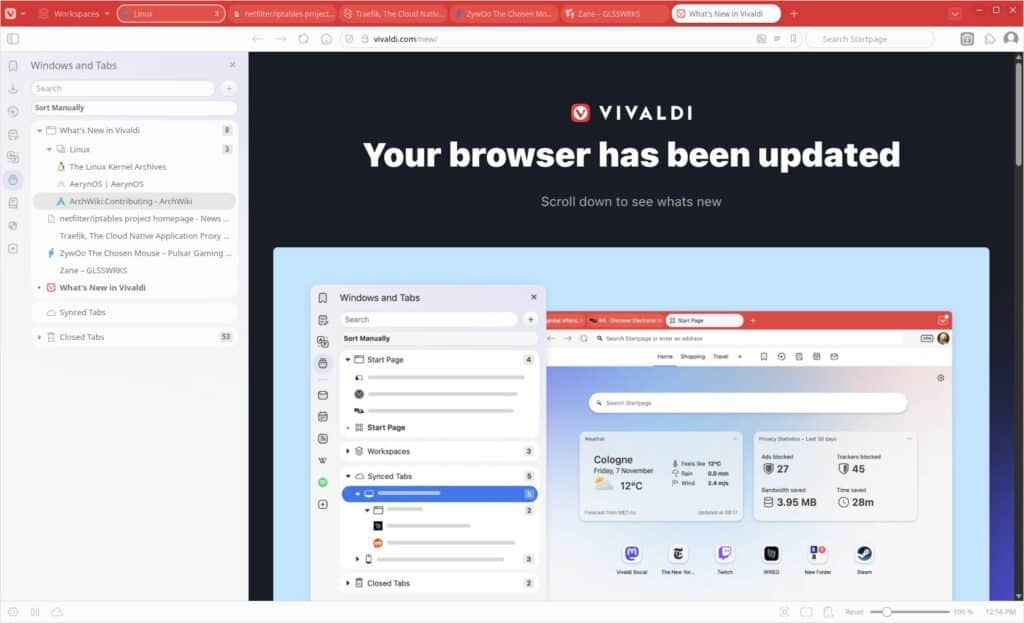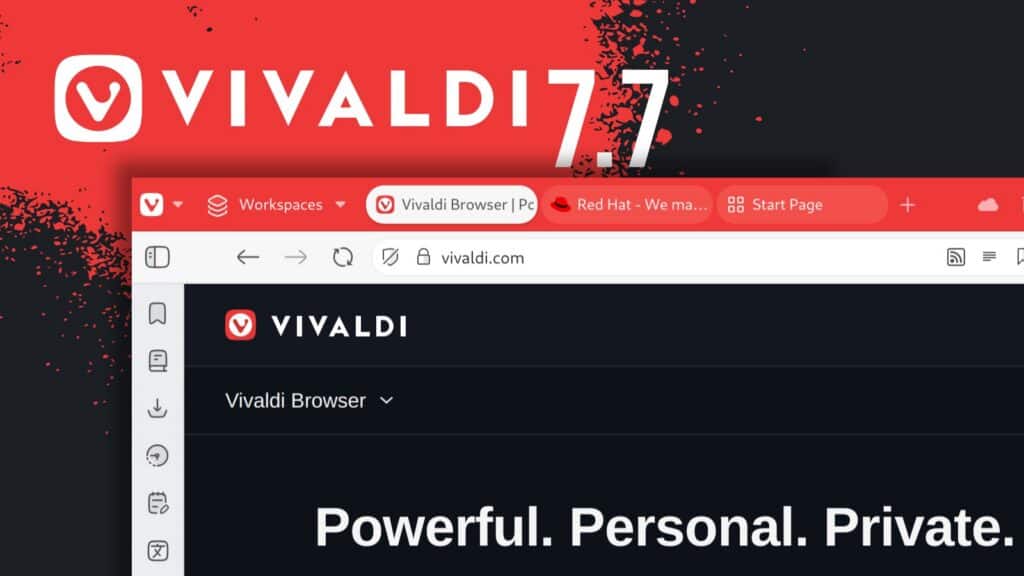Vivaldi today released version 7.7 of its cross-platform web browser, introducing a redesigned Start Page, more reliable cross-device tab syncing, a refreshed Privacy Dashboard, and a dedicated performance section with Memory Saver options.
The new synced-tabs experience allows users to open complete tab structures—including full windows, Tab Stacks, and Workspaces—from any desktop device. Instead of a flat list, Vivaldi now preserves each tab’s hierarchy, making it easier to resume work when switching between machines.
Moreover, Vivaldi 7.7 merges widgets and Speed Dials into a single Start Page. Users can mix RSS, weather, mail previews, and other widgets directly with their Speed Dial folders, arranging and resizing them as needed. The change creates a consolidated dashboard for both frequently visited websites and real-time information.

The new Privacy Dashboard is another refined component that provides a clearer overview of blocked trackers, ads, saved bandwidth, and time saved by avoiding intrusive content. It also enhances per-site exception handling, providing users with more visibility into privacy rules and when specific sites require relaxed blocking.
Additionally, a dedicated Performance section has been added to Settings. The Memory Saver feature places inactive tabs into a low-power state, reducing RAM usage. Users can choose how aggressively the browser unloads background tabs and define exemptions for pinned or always-active tabs, offering more fine-grained resource management.
The Mail Panel receives layout adjustments to improve clarity. Sections are now separated into floating bars, and visual elements have been streamlined to facilitate easier navigation and message handling.
Last but not least, Vivaldi 7.7 includes a large number of fixes across Address Field behavior, bookmarks handling, Start Page usability, tab management, Workspaces, Mail, panels, Search, and platform-specific issues on Linux and macOS.
For more information, refer to the release announcement. The downloads are available on the project’s website.
